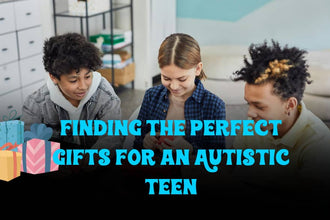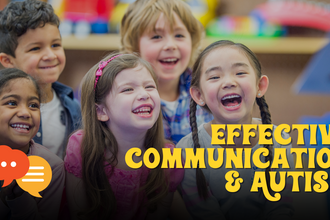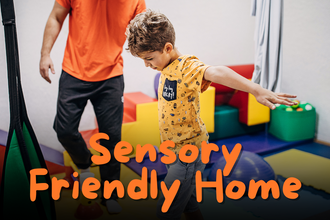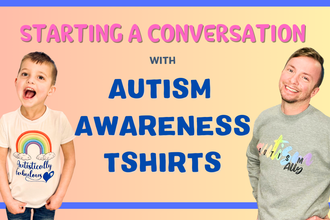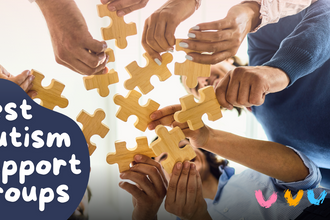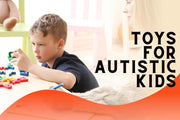
Autism can make it challenging for some children to communicate, socialize, and learn. However, playtime offers a unique opportunity for children with autism to explore and develop essential skills. In this blog post, we'll discover together how play can be a powerful tool for unlocking the potential of children with autism and what toys are best for your kid.
How can autism affect a child?
First of all, it is important to understand how autism affects a child’s development. Autism changes how kids grow and learn in many ways:
- Talking can be hard. Some kids with autism find it tricky to speak, understand others, or have back-and-forth conversations.
- Their senses, like hearing or touch, might work differently. Things like loud noises or certain textures can bother them a lot.
- Doing precise movements, like writing or tying shoelaces, might be tough.
- Some kids with autism have amazing skills in certain areas, while others struggle with things like planning or solving problems.
Why toys are important for autistic kids?

Play is essential for every child's growth. It's an enjoyable way for them to explore and express themselves creatively. However, for children with autism, playing can sometimes be challenging.
Autistic kids may struggle with sharing, understanding social cues, or engaging in imaginative play like other kids. Additionally, sensory sensitivities can make certain types of play overwhelming for them. These challenges can make it harder for autistic children to fully enjoy and benefit from playtime.
This is where toys and play comes in. Toys serve as essential tools to help children learn, communicate, and regulate their emotions. These can help target various developmental goals, including social interaction, language development, and sensory integration. According to crossriver therapy: “Through play, they can engage with their environment in a way that is meaningful to them, fostering a sense of empowerment and control”
How to find the right toy?
Choosing the right toys is helpful in supporting the development of children with autism. Certain toys are specifically designed to support the unique needs of autistic children. The selected toys should not only capture the child's interest but also encourage development. With the right toys, children with autism can have enjoyable experiences that contribute to their overall growth and well-being.
A. Sensory Toys

Sensory toys are specially designed to provide various sensory experiences for children with autism. These toys offer different textures, lights, sounds, and movements to engage the senses and promote sensory exploration. For children with autism, who may have sensory processing issues, these toys can help regulate their sensory experiences, reduce anxiety, and improve focus and attention. Examples of sensory toys include:
1. Fidget Spinners: These handheld toys feature spinning parts that provide tactile and visual stimulation. They help children with autism regulate their emotions and focus their attention.
2. Sensory Balls: These textured balls come in different shapes and sizes and are designed to provide tactile input. They promote sensory exploration while offering a calming sensory experience.
B. Communication and Social Skills Toys

Communication and social skills toys aim to support language development, social interaction, and emotional expression in children with autism. These toys provide opportunities for verbal and nonverbal communication and empathy. They help children with autism practice essential communication and social skills in a supportive and engaging environment. Examples include:
1. Picture Communication Boards: These boards feature pictures or symbols that represent words or concepts. They help nonverbal children with autism communicate their needs, desires, and feelings effectively.
2. Social Storybooks: These books use simple text and illustrations to teach children with autism about social situations, emotions, and appropriate behaviors. They promote emotional regulation in a visual and structured format.
C. Fine Motor and Gross Motor Toys

Fine motor and gross motor toys are designed to improve coordination and strength in children with autism. Fine motor toys focus on developing hand-eye coordination and finger control, while gross motor toys promote balance, coordination, and body awareness. These toys help children with autism enhance their motor skills and engage in physical activity in a fun and meaningful way. Examples include:
1. Building Blocks: These toys allow children to stack, sort, and manipulate blocks to create structures and patterns. They promote spatial awareness and creativity in children with autism.
2. Sensory Swings: These swings provide moving input while offering a calming and soothing sensory experience. They help children with autism regulate their sensory systems and improve balance, coordination, and body awareness.
D. Technology-Assisted Devices

Technology-assisted devices are like handy gadgets that use computers and screens to make things easier for them. These devices can support kids with autism, making learning, communication, and daily routines more accessible and enjoyable for them. Examples include:
1. Nintendo Switch: It's a fun gaming console that has lots of games like "Animal Crossing" and "Mario Kart." These games let kids play and have fun while learning and solving puzzles. The Nintendo Switch is portable, so kids can play games at home or when they're out and about.
2. Smart Watches: These are like fancy watches that kids wear on their wrists. They can vibrate gently to remind kids about things or help them stay calm. Some smart watches can even detect if a kid is having a seizure and send a message to their parents or caregivers to help them.
Takeaway
In conclusion, toys and products for kids with autism can make a big difference in their lives. Each toy, whether it's a sensory toy or a communication device, has its own special way of helping them learn and have fun. But remember, every child with autism is unique, so it's important to choose toys that fit their interests and needs. By doing this, we can create a supportive environment where they can thrive and enjoy learning in their own special way
Become a part of Prideful on the Spectrum's community today where we spread awareness about the diverse spectrum of abilities in autistic individuals. Explore our carefully crafted toys and a clothing line that aims to celebrate differences and challenge stereotypes. Come and join hands in bringing a change- Explore now!


